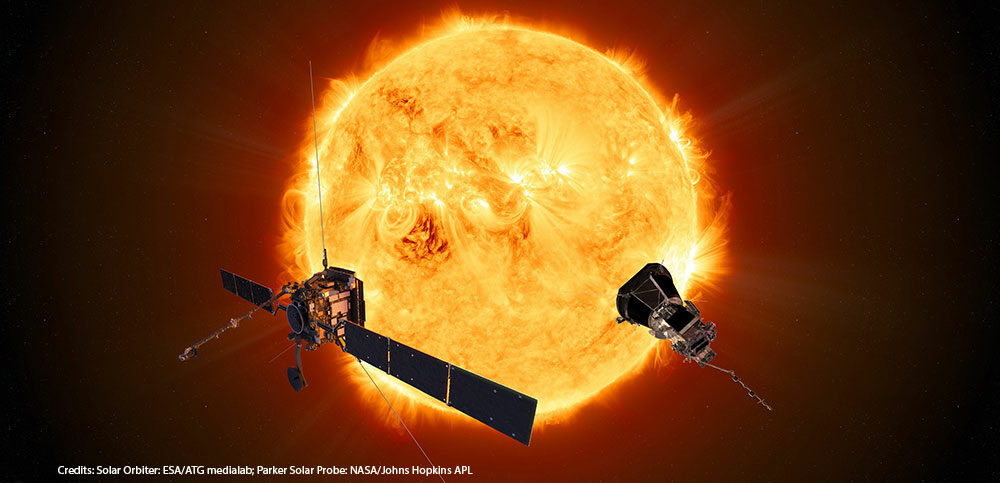The launch of the Helios-A spacecraft on December 10, 1974, followed by Helios-B on January 10, 1976, in combination with observations by spacecraft located at the Sun-Earth Lagrangian point L1 (e.g., ISEE-3, 1978 -1997), opened the era of multi-spacecraft particle and field measurements in the inner heliosphere.
In the following decades, the above missions were complemented by other spacecraft orbiting the Sun at ~ 1 AU in the ecliptic plane (e.g., Wind (1994), SOHO (1995), ACE (1997), STEREO (2006)), or moving to higher heliolatitudes (Ulysses (1990 – 2009)).
With the recent launches of Parker Solar Probe (August 12, 2018) and Solar Orbiter (February 10, 2020), multi-spacecraft observations entered a qualitatively new era, which is characterized by highly precise measurements of solar wind parameters and energetic particles. These measurements are unique because they are performed closer to the Sun than ever before, in some cases within the Alfvén critical surface. Additionally, high-resolution images of the Sun provide crucial information about the origin of the solar wind and of energetic particles.
The 50th anniversary of the Helios mission is a good opportunity to put those early measurements into the context of modern ideas and compare those early findings with present-day measurements.
The Workshop will bring together experts in data analysis, modeling, and theory in order to understand particle acceleration and transport in the inner heliosphere, e.g., the region between the Sun and the orbit of Jupiter.
Achievements and lessons learned from the first multi-spacecraft analyses (Helios and near-Earth missions) will be reviewed, new exciting data from the modern spacecraft such as Solar Orbiter and Parker Solar Probe will be discussed.
The Workshop will combine the knowledge about the possible sources of the energetic particles – among them solar sources like flares and jets, and interplanetary sources like CMEs, shocks and other transient structures. We will describe particle characteristics expected from different acceleration mechanisms, and make critical comparisons with the existing observations.
A part of the Workshop will be devoted to the interplanetary background through which the energetic particles propagate in the heliosphere, namely the solar wind (composition, turbulence, structures, and their spatial evolution). Information about the latest particle observations will be combined with existing propagation theories and modeling results.
This Workshop, which is by personal invitation only, will bring together approximately 40 experts in the field.

